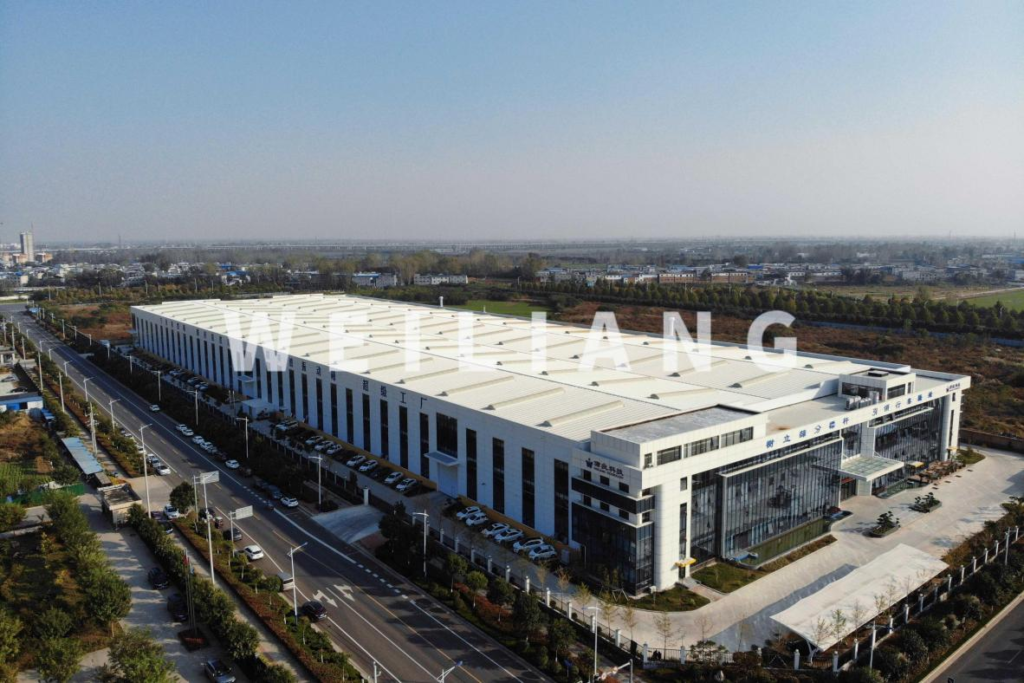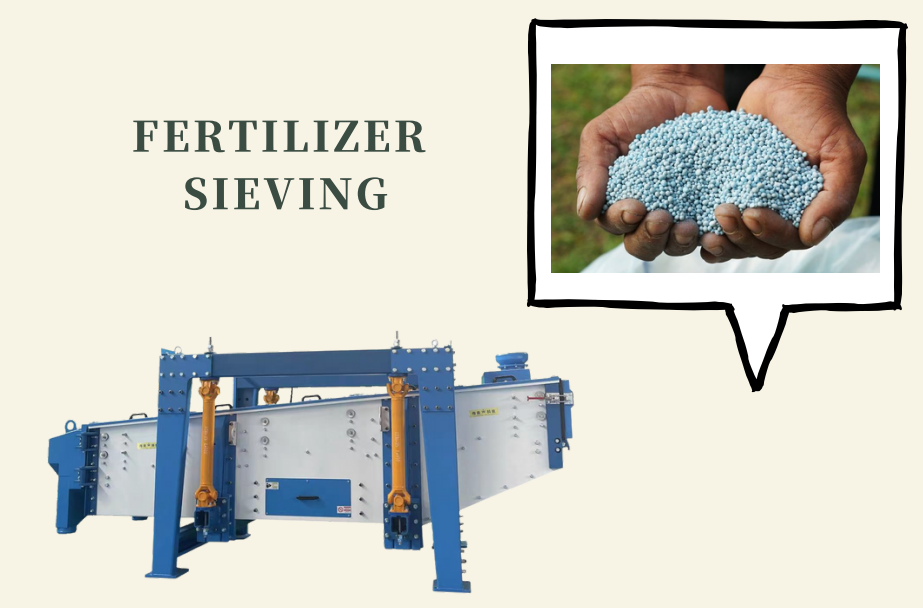
ABOUT FERTILIZER
A fertilizer is any natural or synthetic material that is applied to soil or plant tissues to provide plant nutrients. Fertilization in most modern agricultural practices focuses on three main macronutrients: nitrogen (N), phosphorus (P), and potassium (K), with the occasional addition of micronutrient supplements such as rock flour —- reference to Wikipedia.
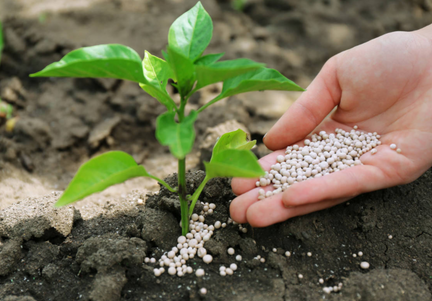
CLASSIFICATION
- “Straight Fertilizers”— provide a single nutrient (e.g., K, P, or N)
- “Multinutrient fertilizers” (also known as “complex fertilizers”)—contain two or more nutrients, such as N and P.
- Fertilizers are also classified as inorganic or organic. Except for ureas, inorganic fertilizers do not contain carbon-containing materials. Organic fertilizers are typically made from (recycled) plant or animal matter. Because various chemical treatments are required for their production, inorganic fertilizers are sometimes referred to as synthetic fertilizers.
FERTILIZER INDUSTRY TREND
In summary, fertilizer prices continue to rise and the global fertilizer market is growing significantly. All available data indicate that the fertilizer industry has a promising future, with significant growth for fertilizer manufacturers.
More specifically:
According to Data Blog by John & Wee, 2022:
FERTILIZER PRICES EXPECTED TO REMAIN HIGHER FOR LONGER.
Fertilizer prices have risen nearly 30% since the beginning of 2022, following an 80% increase last year. Prices are rising due to a combination of factors, including rising input costs, international conflicts and others. Urea prices have surpassed their 2008 highs, while phosphate and potash prices are approaching their 2008 highs. The Ukrainian conflict has heightened concerns about fertilizer affordability and availability.
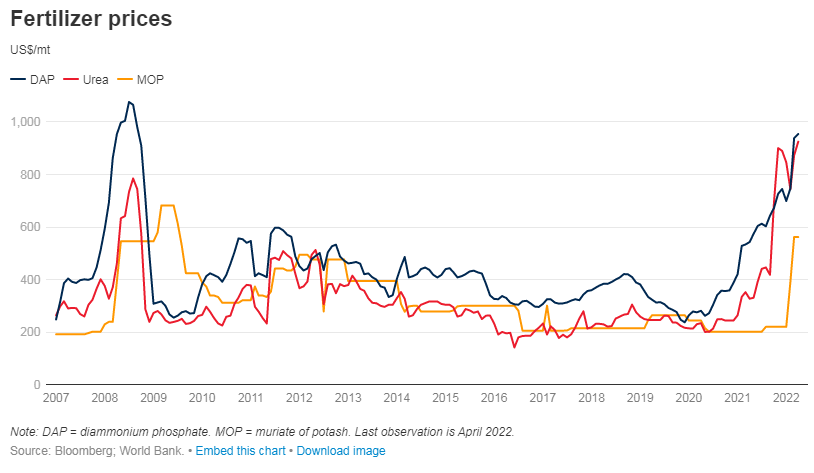
According to the report of Global Opportunity Analysis and Industry Forecast, 2021-2030 (Pankaj J& Vitika V, 2022):
The global fertilizer market was worth $184.60 billion in 2021 and is expected to reach $251.57 billion by 2030, growing at a CAGR of 3.55% between 2022 and 2030.
- Firstly, by type, the inorganic sub-segment generated the most revenue share in 2021 and the organic fertilizer submarket is projected to grow at a CAGR of 5.5% from 2022 to 2030.
- Secondly, by application, agriculture will dominate the market share in the application industry of fertilizers. According to Future Farming, the world’s population is expected to reach 10 billion by 2050. The demand for fertilizers in agriculture has risen dramatically.
- Thirdly, by region, Asia-Pacific dominated the global fertilizer market share in 2021 and is expected to continue to do so throughout the forecast period. High nitrogenous fertilizer rates per hectare are used by Asian countries such as Korea, China, Japan, and, more recently, Vietnam for both short-term and perennial crops.
As a result, specialty fertilizers are in high demand in the region.
(Reference report of Fertilizer Market by Type, by Form, by Application: Global Opportunity Analysis and Industry Forecast, 2021-2030, Pankaj J& Vitika V, 2022)According to a recent study by market research firm Graphical Research:
The global fertilizer market is expected to grow significantly during the forecast period due to rising global food demand.
- U.S. records soaring organic fertilizer sales
The organic fertilizer market in the United States is expected to grow at a CAGR of more than 4% through 2028.
- Fresh investment in fertilizer production in North America
The U.S. as a major importer of foreign fertilizer is greatly affected by Russia’s announcement in February 2022 to suspend fertilizer exports. As a result, the USDA announced a new $250 million grant program in March 2022 to address the rising costs and shortages of fertilizer caused by the conflict.
(Reference report of Fertilizer Market: Top Trends Boosting the Industry Revenue Through 2028, Graphical Research, 2022)
FERTILIZER PRODUCTION PROCESS
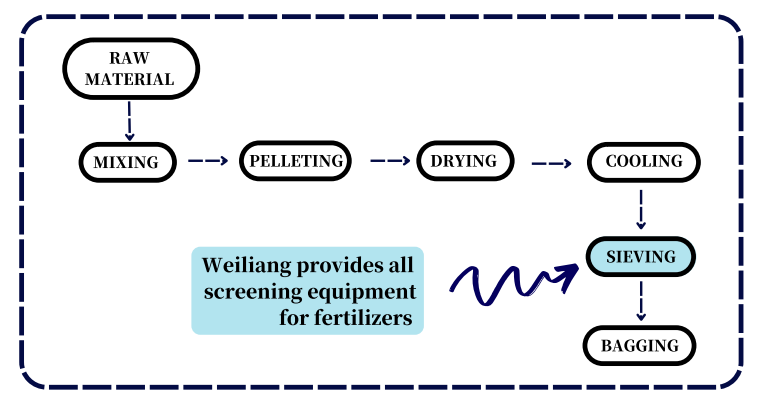
Raw Material—Mixing—Pelleting—Drying—Cooling—Sieving—Packing
ERTILIZER SCREENING CUSTOMER CASES
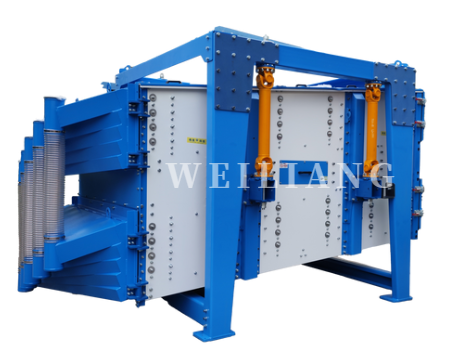
The WEILIANG Gyratory Screen used for classification of bulk dry materials, both meets the requirements of high precision and large throughput. It with the highest performance per screening area provides sharper separations, higher volume, few maintenance, unparalleled material spread-ability and lower finished product wastage.
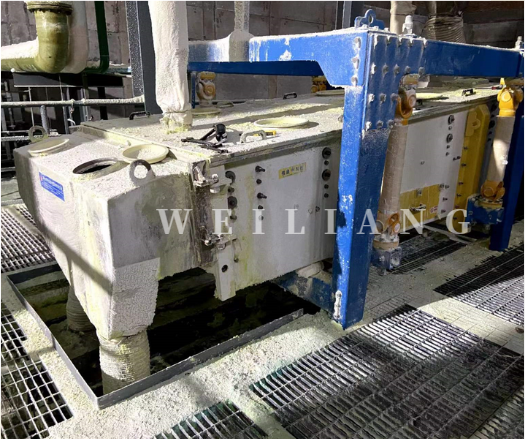
Material: Urea
Model: FYBS-1536-2S
Sieving Demand: Remove fine powder from urea particles.
Sieving Challenge: Urea is easily moist and agglomerating when in contact with air, which causes screen blockage.
Our Solution: Remove feeding distributor & Efficient bouncing ball cleaning system.
More information about us, please visit our website: https://wlscreener.com/

